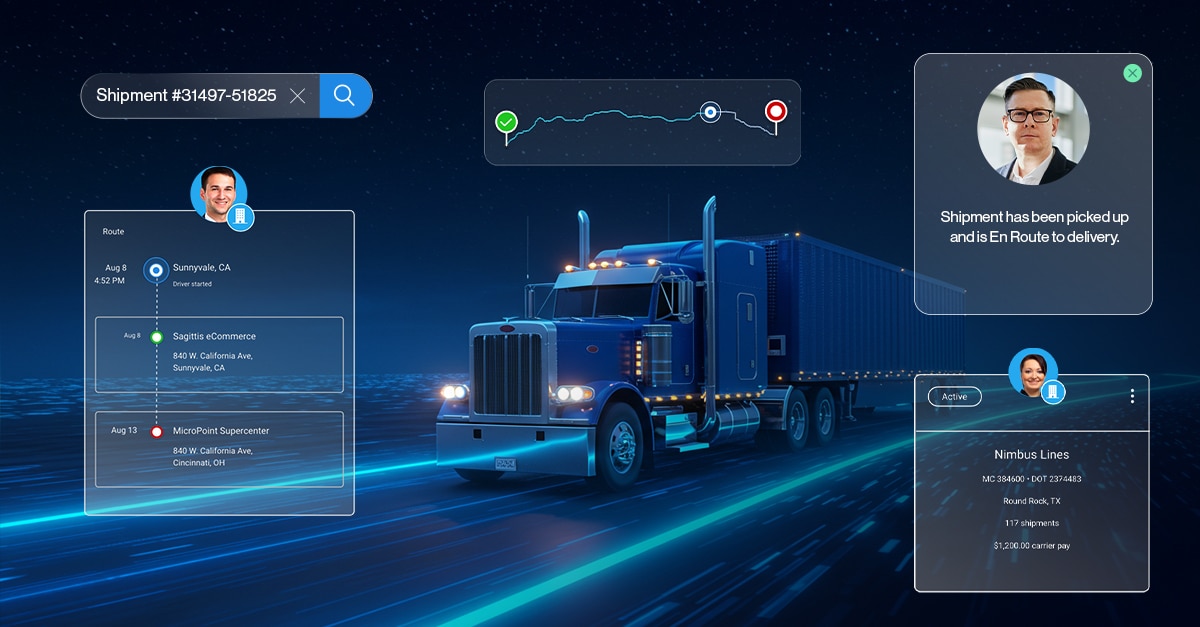Maintaining a freight broker business and helping it stand out from the crowd is more difficult than ever. In today’s world, anyone can start a business, grow into a successful broker, and work with the biggest names in shipping. Unfortunately, that does not always amount to spending money reasonably and maintaining control over freight spend. For those operating a freight broker business, the challenges are greater. Shrinking profit margins undermine the value of freight brokers, and in a supply chain reality of disruptions that may require potential costly pivots, how can any broker lower their expenses? That’s the Catch-22 of the situation, but a potential solution is within their reach. It rests in understanding the value of collaborative logistics, including the causes of shrinking profit margins in freight brokerages, how analytics and data allow Freight Brokers to measure and improve the health of their business, and immense opportunities to apply analytics, drive collaboration, and lower freight costs for customers.
The Causes of Shrinking Profit Margins in the Freight Broker Business
The causes of financial trouble in the freight broker business stem from several common issues, including:
-
Limited access and inability to automate data.
-
Inability to determine demand versus carrier availability.
-
Inaccurate rating for shipments.
-
Limited follow-through regarding shipments.
-
Delays in paying carriers.
-
Poor scheduling.
Of course, these problems all lead to fewer bookings and worse profit margins, but a darker side remains. Freight brokers that try to rapidly enter the market without the technology and ability to really compete with their competitors, i.e. “work with shippers to secure more bookings,” always fail, notes DC Velocity. Therefore, success hinges on understanding their businesses’ needs and the best carriers and shippers to work with to succeed.
Analytics and Data Enable Better Planning and Cost Reductions
Using analytics is also crucial to identifying errors in shipping invoice data and reducing the amount of time lost between booking and getting paid. As reported by FreightWaves, “the ability to process payments quickly is a requirement, especially for brokers who offer early payment options, and allow their carriers to select a different option on each invoice they submit. In our experience, the ability to process and pay a carrier’s invoice on the due date is an essential component of being viewed as a trusted and reliable broker. It’s also a necessary part of being able to attract and retain enough quality carriers to make future growth possible.” In addition, the right application of analytics helps to improve freight forecasting through continuous analysis of real-time data, reducing the uncertainty running a freight broker business entails as well. According to TruckingInfo, “that gives us the capability to forecast out much farther than our competitors. We have a daily forecast for customers that goes out 14 days, as well as an annual forecast and even one that goes out as far as 24 months, to help fleets decide how many trucks they need in future. These forecasts can also help brokers, shippers and fleets take a lot of the guesswork out of a proposal to move freight, say, a year from now. That’s a decision that used to be based largely on experience and guesswork. And we can provide a lot of certainty to the process now.”
How to Apply Analytics to Maintain More Collaboration and Reduce Freight Spend
Those operating a freight broker business should follow these three core steps to improve collaboration and reduce freight spend using actionable analytics:
-
Improve risk management strategy with a better review of what-if scenarios. Continual review of the freight forecast and what-if scenarios provide a protective effect against uncertainty. Take the recent disruptions to the supply chain. With a collaborative, analytics-driven platform, these companies might have already seen the writing on the wall for a sudden disruption to their suppliers. The obvious solution now is diversification of suppliers, but it’s too late once a problem arises. The key lies in recognizing when issues arise well in advance and responding accordingly. The same applies to demand forecasting. Continual review and creation of demand forecasts help the freight broker business succeed by booking at the most competitive rate, securing more bookings, and working with carriers to share data and reduce costs together.
-
Connect with all supply chain partners and drivers at all times. For instance, using the Turvo Driver App that can share data and documents wirelessly and without delay can go a long way in providing the real-time information needed to intervene when metrics—powered by analytics—begin to swing out of control.
-
Work with carriers to share data without sacrificing integrity. The only thing worse than not sharing data is sharing the wrong data. The wrong data will cause massive disruptions. But again, analytics can ensure you are sharing the right data, empowering your team with the facts to support all decisions, and eliminating the risk of inaccurate quoting.
Deploy Analytics-Inclusive, Collaborative Logistics Resources to Succeed
Analytics push the limits of the imagination for modern supply chains. They provide a roadmap to ensure your goals are met, and they are an invaluable tool for measuring the health of your business. Meanwhile, it’s growing increasingly difficult to track the performance of partners once they leave your facilities, and it’s time that data shareability finally comes to maturity. Collaborative analytics makes this possible, bringing data from within and outside of your business under your purview and helping you make the most impactful decisions that affect profit margins, customer experiences, and total freight spend. Of course, it always begins with bringing the data treasure troves of your supply chain partners into view. Kickstart the unification of your supply chain by contacting Turvo online today.








